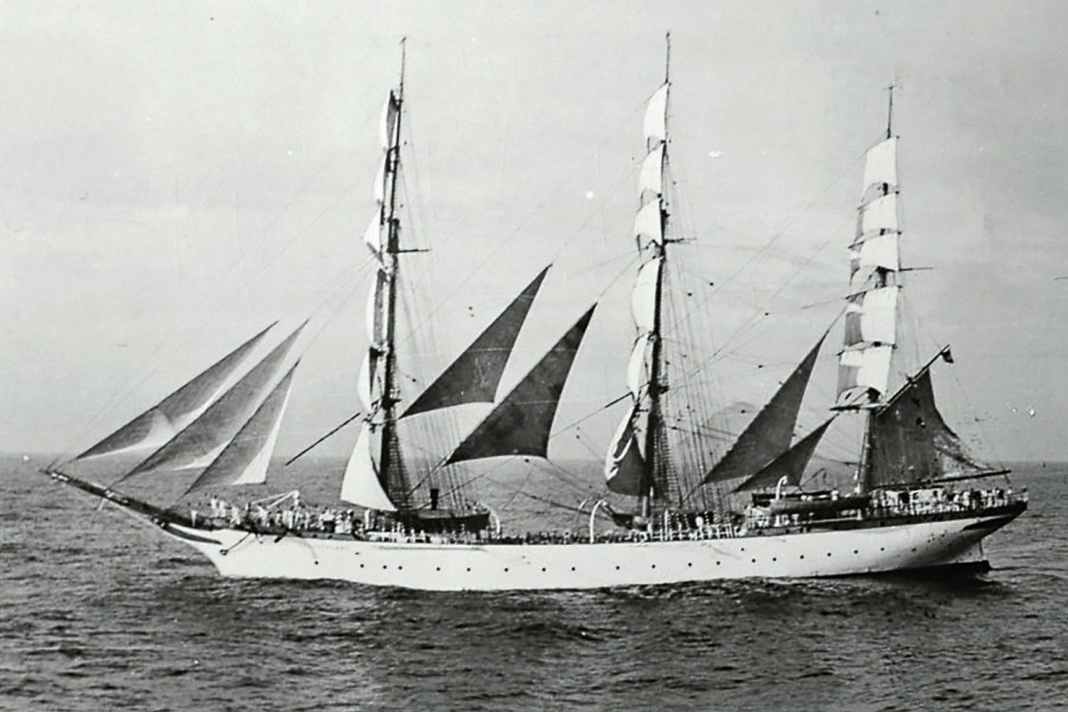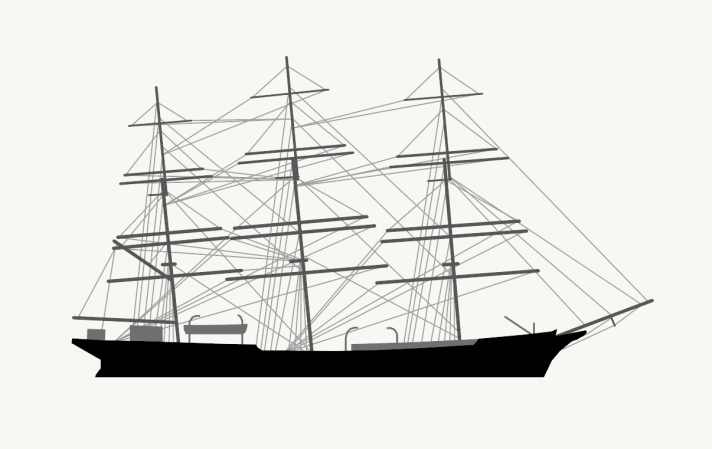




The high school of seamanship is nowhere as hard as on a tall ship. For this reason, training under sail also enjoys a special reputation that dates back to the time when "ships were made of wood" and the men who sailed them were "made of iron".
Schulschiff-Verein and "Schulschiff Deutschland"
Nevertheless, it was not the romantic, heroic glorification of Wilhelminianism that led to the founding of the German Training Ship Association in Berlin in 1900. Pragmatic merchants were responsible: the Empire's maritime trade was booming and German shipowners needed new recruits for their growing fleets.
And at that time, these still consisted largely of cargo ships, which were faster and more economical than coal-guzzling steamers, especially on long-distance voyages. The "Schulschiff Deutschland" was the organisation's fourth ship to be launched in 1927. The addition to her name was less due to her upcoming task than to the fact that the armoured ship of the same name was already being planned.
We travelled to the South Atlantic in winter
Until 1939, the "Schulschiff Deutschland" undertook winter training voyages in the South Atlantic, for example to Rio de Janeiro in Brazil and Cape Town in South Africa. There were a total of twelve of these overseas voyages and 17 summer training voyages in the North and Baltic Seas. They travelled up to 12,000 nautical miles and reached speeds of up to 17 knots.
Despite the circumstances of the war and a decimated regular crew, around 800 officer candidates were trained during the war. On 15 April 1940, the "Schulschiff Deutschland" was transferred to the Baltic Sea. Due to increasing air raids, the ship was transferred to Lübeck in November 1941, from where training voyages in the Baltic Sea continued until 1 October 1944.
Training ship, residential ship, museum ship
At the end of the war, the ship was used as a floating military hospital, then as a residential ship for the German minesweeping units set up in Cuxhaven by the Allies. From 1952, maritime training for ship's officer cadets began again on board, but only on a stationary basis. After twenty years, this form of training came to an end, with trainee ship mechanics still living on board until 2001. The "Schulschiff Deutschland" was then berthed as a museum ship in Bremen-Vegesack, before finally moving to Bremerhaven's New Harbour in 2024.

Technical data of the "Schulschiff Deutschland" (1927)
- Full-rigged ship, training ship
- Shipyard: Joh. C. Tecklenborg, Geestemünde
- Hull material: steel
- Length (overall): 86.2 m
- Height (main mast): 52.0 m
- Sail area: 1,950 m2
- Speed (sail): 17 kn
- Berth: New harbour, Bremerhaven
Information for visitors
The sail training ship is moored in the New Harbour in Bremerhaven. The last German full-rigged ship provides an insight into merchant shipping in the 20th century. There is an on-board museum on the officer's deck. You can explore the ship on your own or book a guided tour for groups of ten or more.
Opening hours: Daily, March-October 10am-6pm, November-February 10am-5pm. On Fridays and on the 2nd and 4th Saturdays of the month, the boat may be closed for one hour for wedding ceremonies.
Prices: Adults: 4.50 euros, children: 3.50 euros, families: 12 euros. Guided tour: adults 60 min., 9 euros, children 30-45 min., 6 euros. Tel.: 0471/30055597, Internet: schulschiff-deutschland.de
Travelling by boat: In the centre of the Havenwelten lies the Lloyd Marina Bremerhaven. Tel.: 0471/1428690, New Harbour Lock: VHF channel 69, Tel.: 0471/9412840.
